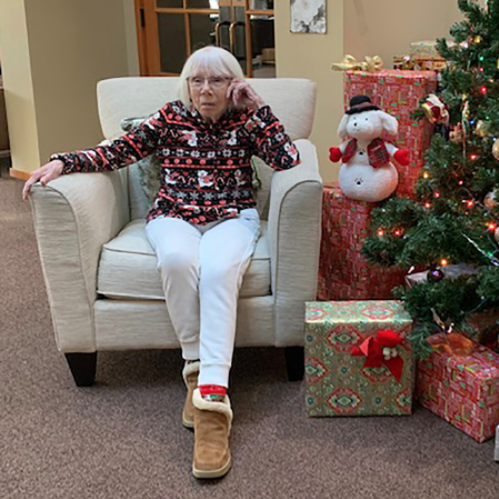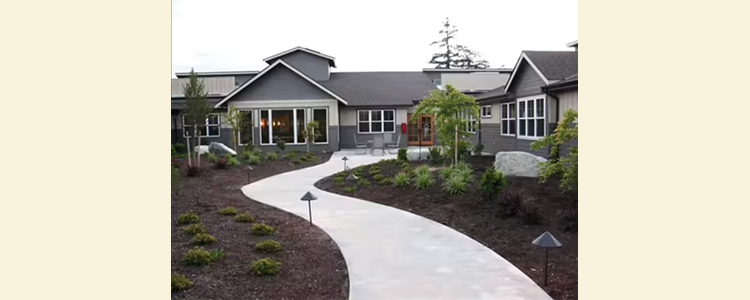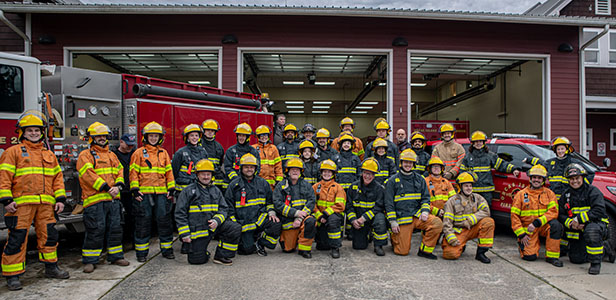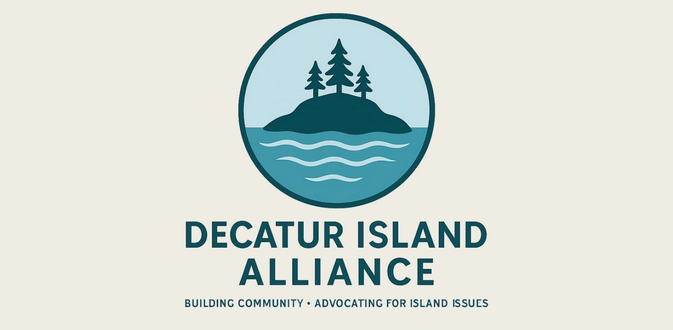||| FROM SALISH CURRENT |||
Faced with a looming crisis in long-term eldercare, San Juan Island voters approved a tax increase levy on Nov. 2 for San Juan Island Hospital District 1 to buy the Village at the Harbor, a privately owned assisted living center in Friday Harbor.
“It is very innovative for the hospital district to take this on,” said hospital district commissioner Trish Lehman, speaking personally and not on behalf of the district. “There is only one other district in Washington that owns an eldercare facility and that one is a skilled nursing facility rather than assisted living, which is what the Village is.”
There are very few such models across the country. If successful, the Village could provide a new concept.
With the tax increase, plans are now underway to move forward to expand staff, expand bed availability and increase training. The tax increase isn’t huge, said Nathan Butler of the Hospital District 1, but it’s meaningful. A homeowner with property worth $500,000 will be paying an additional $180 a year. Butler himself supported the measure because the alternatives of limited long-term care and no local Medicaid beds was unimaginable.
“I am not one who wants to be taxed more, but this is going to be an epically life-changing endeavor,” Evan Perrollaz, administrator for Village at the Harbor, said.

A new model for eldercare is envisioned for the Village at the Harbor when its new owner, San Juan County Hospital District 1, takes over in February. The plan calls for both assisted-living and skilled-care beds. It aims to keep island residents — such as this current “founding member” resident and former employee — in the community. (Heather Spaulding photo © 2021)
Impossible without taxpayer support
In 2019 approximately 54.1 million adults 65 and older lived in the United States, about one in every seven residents. In the next two decades, the number of adults older than 60 will increase to 74.6 million, who will need a wide variety of assisted care for their daily lives.
Simultaneously, health care providers across the nation are leaving the health profession at an alarming rate.
San Juan County, with 35% of its population 65 or older, according to the Census Bureau, sits in the crosshairs of that pending crisis. Perrollaz and fellow health care professionals organized a group called Blue Sky Dreamers after the only skilled nursing facility, LifeCare, closed in 2017. Since then, San Juan County has had no skilled nurse facility, no long-term Medicaid-accepted care facility and a significantly reduced number of assisted-living beds.
“Trying to do long-term care without public taxpayer support was next to impossible here. Financially it just isn’t practical,” Butler said in explaining the LifeCare closure.
According to Perrollaz, over 20 senior-care facilities across Washington have closed this year, and many more are not far behind.
“This is a critical time. Our health care system is really struggling. Fingers crossed we can get through this,” Perrollaz said. One underlying issue is the bureaucracy that Medicaid reimbursements get caught up in. Payments are often months late, leaving companies thousands of dollars behind.
Sent out of the community
Islanders who rely on Medicaid for long-term care not only have to leave the island, but often end up moving as far away as Olympia or Eastern Washington, Lehman said. Studies have shown elderly in rural communities have a higher desire to remain in their communities.
San Juan County is no different, Lehman said: for locals who have devoted decades of energy and love into their homes and community the idea of being trucked off to die, away from loved ones, away from anything familiar, is heartbreaking.
“If you have that deep connection to the island, having to go off island and die, I can’t think of a worse way to go,” Perrollaz said.
Besides the emotional aspect, keeping patients closer to home has tangible medical benefits as well.
“While it is true sending people to Eastern Washington is cheaper, patients — people with dementia or Alzheimer’s for example — do far better when they are closer to their families and surrounded by familiar things. You cannot replicate that any other way than by actually keeping them in those surroundings,” Butler said.
‘I don’t need it’ … yet
The Blue Sky Dreamers first proposed that the Hospital District 1 assist the Village in accepting Medicaid but Perrollaz suggested buying The Village. The district will take over the Village at the end of February next year, and as part of the hospital district’s plan, the Village will have four to six Medicaid beds. The plan calls for an expansion which would eventually allow the Village up to 30 Medicaid beds.
“What we are doing at the Village is phenomenal,” Perrollaz said “but this is a drop in the bucket with what we need.”
Perrollaz’s neighbor recently developed serious health problems. Private caregiving cost approximately $5,000 a month, and an emergency care team even more. “He was losing everything right in front of my eyes,” Perrollaz said. Fortunately, a group of friends were able to help, and Perrollaz was able to direct the neighbor and his wife to more resources.

A staff member checks her temperature before starting work at the Village. Part of the vision for the new model is to stimulate training of more health care professionals, to bolster a recent drain in the workforce. (Heather Spaulding photo © 2021)
“One of the big arguments I heard against the levy was ‘well, I don’t need it, why should I pay for it?’ The problem is, sure, you don’t need it now, but you will,” Perrollaz said. Like his neighbor, that need can happen quickly.
“No one knows they need senior care until they need it,” Perrollaz said, no one wants to move into a retirement home. “No one has ever visited the Village at the Harbor and said they couldn’t wait to move in,” Perrollaz said.
Lehman pointed out that there is funding for Medicaid in the Build Back Better bill, which the Village could qualify for when the Medicaid beds are available.
Training new caregivers
One of the top priorities after acquiring the Village, will be pay raises and benefits for the staff.
“It has been particularly bad this year, but I have lost a lot of good employees because I could not pay competitive wages,” Perrolliaz said. According to Lehman a significant number of health care professionals do not have health care benefits, which is one of the reasons nurses and caregivers are changing careers.
One of the hospital district’s goals is to attract people, especially young people, into the field.
“We are hoping to be able to train home-care aides at the Village,” Perrollaz said. People now can get licensed online, but, Perrollaz said he isn’t a fan of online training because there are some things you have to do hands-on to learn properly, like how to lift someone up safely. It is a profession that needs to be learned in person to truly be successful, Perrollaz said.
The future Village training hub would be accessible to people on all the islands interested in being licensed for home-care careers. The Village could work with local high schools and with the San Juan County Economic Development Council to engage youth who are interested in home care.
Once the Village becomes an established home-care agency, Perrollaz said, the facility will be a one-stop shop, he said, for anyone in need of a home-care aid.
READ FULL ARTICLE: salish-current.org/2021/12/10/eldercare-crisis-inspires-life-changing-innovation-on-san-juan-island/
**If you are reading theOrcasonian for free, thank your fellow islanders. If you would like to support theOrcasonian CLICK HERE to set your modestly-priced, voluntary subscription. Otherwise, no worries; we’re happy to share with you.**








